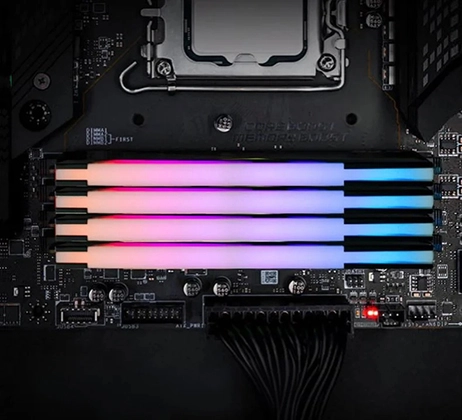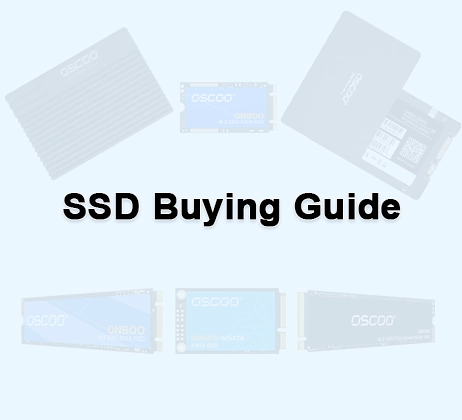In today’s digital age, storage devices play a crucial role in our daily lives. Whether it’s storing important documents, high – resolution images, complex codebases, or immersive game worlds, choosing the right storage device is essential. Different user groups, such as students, designers, programmers, and gamers, have distinct requirements when it comes to storage. This article aims to provide comprehensive purchase advice for each of these groups.
1. Students

1.1 Storage Needs
Students typically use storage devices for a variety of purposes. They need to store lecture notes, which can be in the form of text documents, audio recordings, or even video captures. Course materials like e – books, PowerPoint presentations, and research papers also require space. Additionally, many students have personal files such as photos, music, and some light – weight applications.
1.2 Capacity Considerations
For students, a storage capacity of at least 128GB is a good starting point. This can accommodate a semester’s worth of study materials, along with a reasonable amount of personal data. However, if a student is also into photography or video – making as a hobby, or if they plan to keep a large media library, they might consider a 512GB or 1TB device.
1.3 Type of Storage Devices
- SSD USBフラッシュドライブ: SSD USB Flash Drive are a cost – effective option for students who need a large amount of storage space. They are available in capacities ranging from 128GB to 1TB. For example OSCOO SU001, it is equipped with dual interface USB-A and Type C, providing relatively fast data transfer speeds for large – scale file transfers, such as when backing up an entire semester’s worth of projects.
- Cloud Storage: Cloud storage services such as Google Drive, Dropbox, and OneDrive are becoming increasingly popular among students. They offer a certain amount of free storage (e.g., 15GB on Google Drive), and additional space can be purchased at a reasonable monthly fee. Cloud storage allows students to access their files from any device with an internet connection, which is great for group projects and studying on – the – go.
2. Designers

2.1 Storage Needs
Designers deal with large – sized files on a daily basis. High – resolution images from digital cameras or scanners, 3D models, and complex graphic design projects all require substantial storage space. Moreover, they need storage devices that can read and write data quickly to ensure smooth workflow, especially when working with large – scale projects.
2.2 Capacity Considerations
Designers should consider storage devices with a minimum capacity of 1TB. For those working on high – end projects, such as 4K video editing or large – scale 3D modeling, a 2TB or even 4TB device would be more suitable. This allows them to store multiple projects, along with the source files and reference materials.
2.3 Type of Storage Devices
- Solid – State Drives (SSDs): SSDs are the preferred choice for designers due to their fast read and write speeds. A high – performance SSD, such as the OSCOO ON900 NVME PCIE3*4, can significantly reduce the time it takes to load and save large design files. These drives are available in both internal (for desktop and laptop upgrades) and external (connected via Thunderbolt 3 or USB – C) versions. External SSDs are convenient for designers who need to work on – the – go or transfer projects between different workstations.
- High – Capacity External Hard Drives: In addition to SSDs, designers may also need high – capacity external hard drives for long – term storage of completed projects. Drives with capacities of 4TB or more, like the OSCOO MD006, can store a vast number of design files. These drives are often used for archiving purposes, allowing designers to free up space on their primary SSDs while still having easy access to their past work.
3. Programmers

3.1 Storage Needs
Programmers need to store code repositories, development tools, and test data. Codebases can range from small personal projects to large – scale enterprise applications. They also often need to keep multiple versions of their code, along with documentation and test scripts. Additionally, some programmers may work with large datasets for data – intensive projects like machine learning.
3.2 Capacity Considerations
A 512GB storage device is a decent starting point for most programmers. However, those working on large – scale projects, especially in data – heavy fields like data science, may require 1TB or more. This ensures that they have enough space for all their development tools, code, and any large datasets they might be working with.
3.3 Type of Storage Devices
- 内蔵SSD: An internal SSD is essential for programmers. It provides fast boot times and quick access to development tools and code repositories. Modern SSDs with NVMe (Non – Volatile Memory Express) interfaces, such as the OSCOO Blue series, offer excellent performance. This allows programmers to start their development environments quickly and reduces the time spent waiting for code to compile or for data to be loaded during testing.
- 外付けSSD: External SSDs are useful for programmers who need to work on multiple computers or for those who want to keep a backup of their important codebases. These drives can be easily connected to different workstations, and their fast transfer speeds make it convenient to transfer large code repositories. For example, the MD008 external SSD is a reliable option with high – speed USB – C connectivity.
- Network – Attached Storage (NAS): For programmers working in a team environment or for those who have a large collection of code and data that needs to be shared across multiple devices, a NAS can be a great solution. A NAS allows multiple users to access and share files over a local network. It also provides features like data backup and version control, which are beneficial for collaborative programming projects.
4. Gamers

4.1 Storage Needs
Gamers need to store large – sized game files, which can range from a few gigabytes to over 100GB for some modern triple – A titles. They also need to consider fast – loading times to reduce waiting between game levels or during the initial launch. Additionally, gamers may want to keep game recordings, screenshots, and save files.
4.2 Capacity Considerations
For gamers, a minimum of 512GB is recommended, but 1TB or 2TB is becoming more common. This allows them to store several popular games, along with any additional content like downloadable expansions. Gamers who are also into game streaming or recording may need even more storage space to keep their recordings.
4.3 Type of Storage Devices
- High – Performance SSDs: SSDs are a must – have for gamers. They significantly reduce game loading times compared to traditional hard disk drives (HDDs). M.2 NVMe SSDs, such as the OSCOO ON1000PRO, are popular among gamers. These drives can be installed directly into the motherboard, providing fast access to game files. The fast read and write speeds of SSDs also make it easier to install and update games quickly.
- External HDDs or SSDs: External storage devices are useful for gamers who want to expand their storage without having to open up their gaming consoles or PCs. External HDDs can be used to store less – frequently played games, while external SSDs offer faster access for games that are played more often.
5. Conclusion
In conclusion, choosing the right storage device depends on one’s specific needs. Students can get by with a combination of external hard drives, USB flash drives, and cloud storage, depending on their usage patterns. Designers require high – speed SSDs and large – capacity external hard drives to handle their large – scale projects.
Programmers benefit from fast internal and external SSDs, as well as NAS solutions for collaborative work. Gamers need high – performance SSDs to reduce loading times and may also consider external storage for additional capacity.
By understanding the unique requirements of each user group, consumers can make an informed decision when purchasing a storage device, ensuring that they have the right amount of storage with the necessary performance to meet their digital needs.




